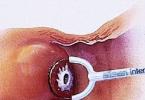The National Police of Ukraine plans to update the fleet. According to the head of the police, Khatia Dekanoidze, in an interview with Ukrinform, negotiations are currently underway with Japan to replace the supply of Toyota Prius with vehicles more suitable for patrolling.
“I agree that the Toyota Prius is not an ideal vehicle for patrol police,” Dekanoidze admitted. The head of police also noted that new cars will be purchased only on condition of "full funding".
Dekanoidze did not specify when and what kind of cars the leadership of the patrol police wants to buy. “I will not reveal all the secrets now, but I hope that we will update our fleet of vehicles soon,” the head of the National Police said.
Toyota Prius is the main vehicle of the patrol police of Ukraine. Last year, Japan handed over almost 350 of these cars to Ukrainian cops. However, in less than a year, more than 200 Priuses were smashed by law enforcement officers.
Theoretically, Toyota can offer Ukraine other models that are more suitable for patrolling. The Japanese company has a special version of the Camry. For example, the Malaysian police ride on these.




Toyota Camry for the Malaysian police are all-wheel drive vehicles with a 2.4-liter engine. The vehicles are equipped with everything necessary for effective patrolling of the streets. On special versions of the Camry, a special police bumper is also installed, which protects the car in case of collisions.

The Japanese also have a special version of the Toyota Prius (pictured above). At the Tokyo Motor Show in 2012, the company introduced the hybrid Prius Police Car. True, there is no information about the car. In particular, it is not known if it is technically different from the standard Prius in any way other than the war paint.
In 1997, Ukraine, along with 192 other industrial countries, signed the Kyoto Protocol, an agreement to reduce harmful emissions into the atmosphere. Each country is given a quota for harmful emissions, but if it does not use it completely, the surplus can be sold on the international market, and the proceeds can be spent on environmental projects.
We were able to exchange our quotas with Japan for environmentally friendly cars. Under the Kyoto Protocol, Japan transferred 1,568 Toyota Prius cars with hybrid engines to Ukraine: in 2013 - 1,220 cars, and in 2014-2015. - 348 more cars.
STORY
The first generation Prius (pictured) appeared in 1997. The model was originally intended for sale in Japan and only three years later appeared on the EU and US markets. It was America, or rather, its richest state, California, that became one of the trendsetters for such cars: there are more hybrids sold there than in Japan and Europe combined (139,000 versus 8,000 and 42,000, respectively). The second generation Prius (1.5 l, 76 + 68 hp) appeared in 2003, the third (1.8 l, 98 + 82 hp) - in 2009: these cars are in service in our police. In 2012, they launched the Plug-In Hybrid - with the ability to charge the battery from the network, as well as 5- and 7-seater Prius + station wagons.
SAFETY

The Prius was tested in 2009 by Euro NCAP. The car earned the highest rating in the tests - five stars (88% of 100 possible). In a frontal impact, passengers and the driver were practically not injured, and not only those who were sitting in front, but also those who were behind were well protected. Also, the Toyota Prius was awarded the maximum number of points for the side test when hitting the barrier. But in the pole test, the dummy's chest protection was rated only satisfactory. The hybrid received the same rating for a rear impact - the work of the active head restraints of the front seats fell short of the ideal. The car also provides a high level of pedestrian safety: the hood and bumper are made of low-impact material.
CONTROL FEATURES

Instead of an ignition lock on the instrument panel, there is a Start button. After pressing it, the car drives on electric traction (if the battery is charged) up to a speed of 70 km / h. When the speed increases, it switches to work from a gasoline engine. That is, in patrol mode (until the battery runs out), the car does not harm the environment at all. There are two operating modes of the hybrid installation: ecological - ECO Mode and dynamic - PWR Mode. In the first Prius, it slowly picks up speed (due to this, the consumption is 3.9-4.5 liters per 100 km). In the second, the car responds to a blow to the gas pedal with powerful acceleration up to 140 km / h, after which the acceleration intensity decreases. And fuel consumption in this mode is about 7.5-8 liters per hundred. On average, the consumption of patrols is 6-6.5 l / 100 km.
HYBRID DESIGN

The car is equipped with a Hybrid Synergy Drive (HSD) power plant, which consists of a gasoline engine (ICE), an electric motor, a generator, a variator and control electronics. The internal combustion engine itself is a simplified analogue of the Atkinson engine, built on the principle of the Miller cycle. That is, compression does not begin immediately at the beginning of the upward stroke of the piston, but with a delay (the air-fuel mixture is pushed back for some time). The downward working stroke of the piston is longer than usual, thereby the energy of expanding gases is used more efficiently, which increases efficiency and reduces fuel consumption. The hybrid car is accelerated by an electric motor that delivers maximum power in any gear. The total power of the internal combustion engine and electric motor is 136 hp. With.
EXPLOITATION

The Prius has a weak point - the battery, which lasts only 160 thousand kilometers, after which it is recommended to change it. With active exploitation (and the police, unlike traffic cops, do not hide in the corners, but travel around the city around the clock), this is about 3-4 years of service. Its replacement will cost $ 4 thousand. But the battery itself consists of many replaceable cells: only some of them can be replaced. The 200-volt nickel-metal hydride battery itself is located behind the rear seat and is forced air-cooled. Otherwise, the operation does not differ from a conventional car - MOT costs 2.5–4 thousand UAH. The Pruis engine runs mainly at low revs, in addition, it is derated - the resource is twice as high as that of a conventional car.
PRICE

The car in the basic configuration costs $ 24 thousand in Japan. Plus, police cars were additionally equipped with service equipment (flashing beacons, a siren, an intercom, integration with the IT system of the Ministry of Internal Affairs, etc.). The total book value of the car was $28,333. That is, the re-equipment cost about $4,000. True, now Deputy Minister Eka Zguladze, in response to the complaints of drivers (they are blinded by too bright flashing beacons), promised to consider replacing the “chandeliers” (as the drivers call them) - it will cost several hundred dollars per car.
It should be noted that civilian Prius in the cabin cost UAH 927,000, or $40,000 - almost $16,000 is customs clearance, excise duties and VAT.
SPEED: IT'S IMPOSSIBLE TO CATCH A SPORT CAR WITH A TOYOTA PRIUS
The sensational police pursuit in hybrid Toyota Prius for the intruder in the Maserati GranTurismo caused bewilderment. After all, the power of a police car is 136 hp. s., and the offender - 460 l. With. The Prius takes 10.4 seconds to accelerate to 100 km / h, during which time the Maserati GranTurismo MC Stradale accelerates to almost two hundred (up to a hundred in 4.5 seconds). And the maximum speed of a sports car is almost twice as high as that of a hybrid - 303 versus 180 km / h. Most likely, the owner of the Maserati GranTurismo just noticed the police late, so they managed to catch up, or traffic jams and traffic lights prevented them from escaping.
IN BRITAIN AT JAGUAR COPS, IN ITALY - LAMBORGHINI
EU traffic police often use sports cars. So, in Britain, this is the Jaguar XF Police with three-liter engines with a capacity of 270 hp. With. The car consumes 7.5 liters per 100 km, and accelerates to 100 km / h in 6 seconds. In Germany, a BMW 530d Police with a 245 hp turbodiesel is used to chase offenders. With. and acceleration to “hundreds” in 6.1 s. And the coolest of all is the Italian police, where they use the Lamborghini Gallardo LP560-4 Polizia. The car can accelerate to 325 km/h, reaching 100 km/h in just 3.7 seconds.
- A photo
Ukrainian police cars
To begin with, it is worth telling why the choice fell on the Toyota Prius. It's all about the Kyoto Protocol, which is a global agreement to regulate the amount of emissions of harmful substances into the atmosphere. Within its framework, each member state receives an annual emission quota and cannot exceed it. If a country has not used its quota in full, then it can sell it on the international market to any other, and spend the money on the environment. Ukraine exchanged part of its remaining quota for 2014 and 2015 for Japanese Toyota Prius cars, which became the equipment of the new patrol police.
In fact, for our country, obtaining these machines did not cost anything. In Japan, a Prius costs 24,000 dollars, more than 1,500 cars were delivered to Ukraine, which means that Japan bought our quotas under the Kyoto Protocol for 36 million dollars. Police cars of Ukraine differed from the standard Prius only in the installed Indonesian-made flasher and siren. And then, some of the cars came with blue flashing lights, while by law a patrol car must be equipped with red and blue flashing lights.

these are the cars of the new police
All other equipment that is necessary for a patrol car was installed by the Ministry of Internal Affairs on its own and the cost per car was about 4 thousand dollars. But before we talk about what exactly is on patrol cars, let's talk about the Toyota Prius themselves.
Toyota Prius III - police cars
What kind of cars does the new police of Ukraine have, what are they equipped with? The heart of the car is the Hybrid Synergy Drive (HSD) - a power plant that consists of an internal combustion engine, an electric motor, a generator, a variator and a computer that ensures the interaction of all elements. The power of the electric motor is 99 hp, but during acceleration, the maximum power is increased by the gasoline engine to 136 hp.
In normal driving mode at speeds up to 70 km / h, the car is completely powered by an electric motor. Therefore, in the normal patrol mode, it does not harm the environment at all and does not make noise. But the power plant also has a weak point - its battery.
According to Japanese engineers, the Prius battery can last as long as the car itself. But this is under ideal operating conditions. After all, it should work at room temperature (which is why it was brought into the cabin) and only charge up to 80% and discharge at least 40% of its power. But how the young policemen will exploit it is unknown. That is why, according to optimistic forecasts, the battery will last for 160 thousand kilometers. And under conditions of constant operation, this is a maximum of 3 years. After the battery will need to be changed, and it costs 4 thousand dollars.
The police car of Ukraine does not differ in its speed characteristics. Acceleration from 0 to 100 km / h they have a little more than 10 seconds, which is on a par with our popular Korean middle-class cars. This is clearly not enough to prosecute violators in expensive foreign cars, which are more than enough on our roads.

police cars in Ukraine
But in general, the car is quite good and, like everything Japanese, reliable. With proper care and proper operation, it runs along our roads for a long time.
Police vehicle equipment
They talk about what kind of cars the police in Kyiv and other cities have, one cannot fail to mention the special equipment that is necessary for the quality performance of their duties by police officers.
The machine is equipped with two walkie-talkies. One is in the cabin, the second is remote and fixed on the patrolman's chest. Also, the machine is integrated into a common database through a tablet computer, which can be used both in the cabin and outside. Registration is provided by the Typhoon digital video surveillance system. A camera is also installed along with the Rubezh complex, which can automatically identify license plates of cars and compare them with a database to search for violators. Moreover, the database includes not only violators of traffic rules, but also defaulters on loans, alimony, utilities, if a request for their search came to the police from the executive service.
Also in each car there is a terminal for paying fines on the spot. This is a very important innovation that will allow drivers to save their time. Acquiring terminals were installed by Oschadbank. They are already in police patrol cars in big cities and in the near future such terminals will be in all cars across the country.
Also in the police Toyota Prius there are other means for doing the work of the police: restrictive cones, first aid packages, road signs and more.
With the replacement of traffic police officers and patrol officers with patrol police officers, new law enforcement officers received new cars for work.
As part of the cooperation under the Kyoto Protocol with Japan, patrol officers received more than 300 Toyota Prius cars.
Stories about how Ukrainians are actively discussing in social networks.
Correspondent.net collected information about how the police beat the cars.
Disappointing statistics
For eight months of work of the patrol police of Kyiv, 78 Toyota Prius cars were damaged as a result of an accident.
The department reported that the cars of the patrol police of Kyiv are insured in the insurance companies "Ukraine" and "Arsenal".
"Patrol police cars have civil liability insurance," the National Police said.
Over the next seven months, patrolmen damaged 60 service vehicles in Kyiv.
In Transcarpathia, patrol officers smashed 20 service cars, for the entire time the patrol service has been working since 2015, the cops have been in 13 accidents.
The most resonant incidents
In Kharkov, on the night of July 24, three cops in a state of intoxication tried to escape from the chase, which was staged by their colleagues in order to stop the violators.
They stopped at the intersection of Belgorod highway and Kurchatov Avenue only after they got into an accident, Mitsubishi Lancer crashed into an electrical pole and a tree. From the place they were taken to the hospital by the doctors of the ambulance brigade. During the accident, the police received injuries of varying severity.
The car was driven by an employee of the district police department, two passengers were members of the patrol police. The police are conducting an investigation into the incident.
In Kyiv, not far from the Dorohozhychi metro station, a patrol police car ran into a woman who was crossing the road at a pedestrian crossing.
Although initially the patrol police reported that the woman was crossing the road in the wrong place, and only after the video was made public, did she admit that the police car hit the woman at the pedestrian crossing.
Patrolmen participating in the event were suspended from duty.
What is the problem
After completing a three-month course, the trainers of the new police officers did not pay any attention to the study of traffic rules and did not test the new cops for driving skills.
The police smashed the first car on the very first working day of service.
The National Police of Ukraine says that, according to the data at the end of 2015, out of all patrol Prius cars, more than a hundred cars underwent repairs of varying complexity after an accident, about five are not subject to repair.
“But here you need to take into account that they work at night, participate in chases. More than 60% of accidents are caused by the fault of others. Police officers are gaining experience every day, and the rate of accidents due to their fault is decreasing. People with rights are already joining the patrol police, and in the process of training they are gaining extreme driving skills,” said Ivan Varchenko, adviser to the head of the Ministry of Internal Affairs.
New cars
Despite all the problems with the cars, the police will get new cars.
Soon they will switch to new Mitsubishi Outlander PHEV (Plug-in Hybrid Electric) cars with a hybrid engine.

The National Police will receive, according to the decision of the Cabinet of Ministers, 651 hybrid vehicles with a consumption of 2 liters of gasoline per 100 km.

"The use of these magnificent modern cars in operation will save UAH 330 million on fuel. The cars will be distributed by the National Police to units throughout Ukraine," Avakov said.
What else do they ride
In addition to the Japanese Toyota Prius, the leadership of the Ministry of Internal Affairs also massively purchased French cars. In total, in 2015, the Ministry of the Interior bought about 300 Renault cars for the new police. And another 651 cars are planned.
Helped Ukraine and the European Union. As part of the border control program between Poland, Ukraine and Belarus, the Volyn police received 38 Isuzu pickups.
Also, Hyundai was given to the police, which they bought under Euro 2012 to work at the Boryspil airport.



